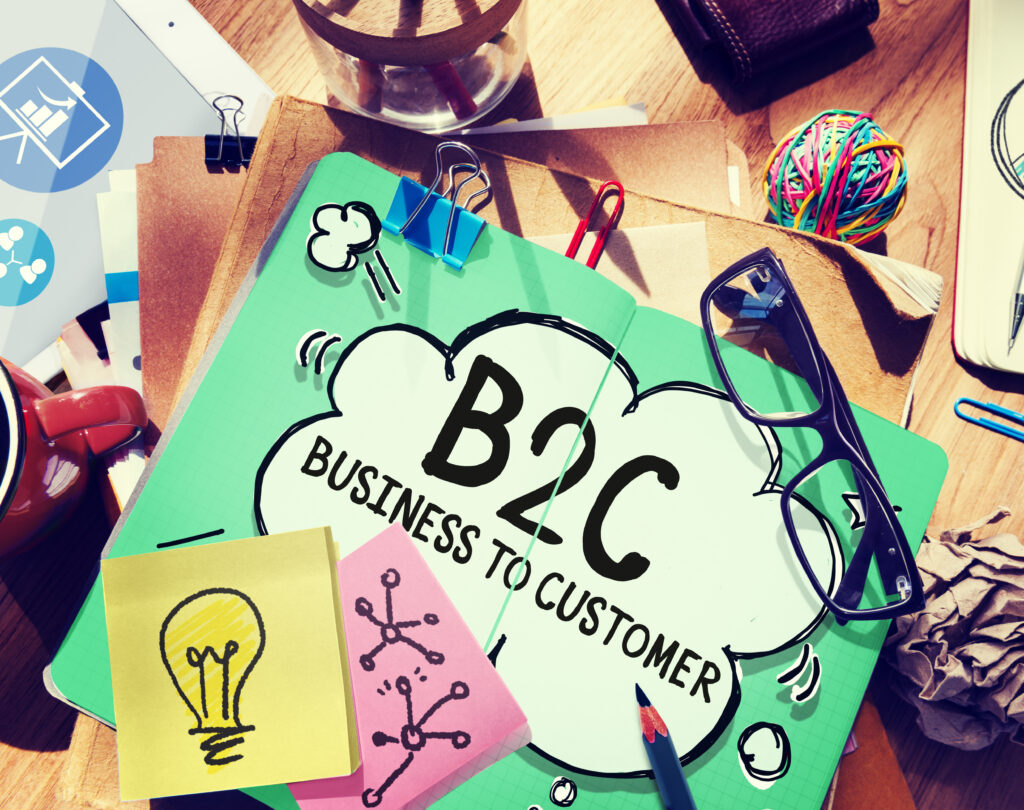If you’ve ever wondered why some brands seem to effortlessly attract customers while others struggle, the answer lies in their B2C digital marketing strategy. Whether you’re running a small eCommerce store or managing a global brand, your ability to connect, engage, and convert consumers in the digital space is what determines success.
But what’s B2C marketing, and how does it differ from B2B marketing? B2C (Business-to-Consumer) marketing focuses on directly selling to individual customers rather than businesses. Unlike B2B sales, which involve long sales cycles and logical decision-making, B2C strategy taps into emotions, impulse buying, and seamless online experiences.
Let’s dive into real-world, actionable B2C digital marketing strategies that actually work.
1. Understanding B2C Digital Marketing
Before you start worrying about ad optimization and content posting, understanding consumer behavior is required. Unlike B2B-type buyers who may think carefully for months, B2C-type customers make decisions quickly based on emotions, trends, or convenience.
B2C Marketing Definition: What It Really Means
At its core, B2C digital marketing is all about creating a fast, frictionless journey from awareness to purchase. This means:
- Making content fun, engaging, and easy to consume
- Leveraging social proof (reviews, testimonials, influencer endorsements)
- Creating an effortless buying process with minimal steps
Now, let’s explore the best B2C digital marketing strategies that top brands are using today.

2. The Best B2C Digital Marketing Strategies
2.1 Social Media Marketing: Meeting Customers Where They Hang Out
I once worked with a small beauty brand struggling with engagement. Their mistake? They were treating social media as a sales platform rather than a community-building tool. When we shifted their strategy to include user-generated content, influencer collaborations, and interactive polls, engagement skyrocketed by 250%.
How to Win with Social Media in B2C:
- Be relatable. People don’t engage with corporate-sounding brands—be conversational.
- Leverage short-form videos. TikTok and Instagram Reels have higher engagement than static posts.
- Use storytelling. Don’t just showcase products—share customer experiences and behind-the-scenes content.
Example: Nike’s Instagram strategy is more about inspiring people than selling shoes. Their content taps into emotions—whether it’s an underdog story or a motivational message.
2.2 Content Marketing: Earning Trust Before the Sale
B2C consumers hate being sold immediately, but they love helpful, entertaining, or inspiring content. If your brand can become a trusted source of information, you’re already ahead of the competition.
What Works in B2C Content Marketing?
- Tutorials & How-To Guides: Sephora’s beauty tutorials educate customers while subtly promoting products.
- Interactive Quizzes & Polls: Buzzfeed-style quizzes can boost engagement and help recommend products.
- User-Generated Content: Encouraging customers to share their experiences increases authenticity and brand trust.
Example: Airbnb’s blog doesn’t just sell vacation rentals—it shares insider travel tips that keep visitors engaged long before they book a stay.
2.3 Email Marketing: Still the King of ROI
If you think email marketing is dead, think again. Personalized emails can drive repeat purchases, recover abandoned carts, and increase brand loyalty.
How to Make Emails Work in B2C:
- Segment your audience. Don’t send the same email to everyone—tailor offers based on past behavior.
- Make subject lines irresistible. “20% off” is boring—“You left something in your cart…” feels more personal.
- Keep it short & visually appealing. No one wants to read a wall of text—use images, GIFs, and bold CTAs.
Example: Starbucks uses email marketing to notify customers about loyalty rewards, personalized offers, and seasonal promotions.
2.4 Paid Advertising: Reaching the Right People, Fast
Paid ads are essential for increasing brand visibility, but only if done strategically. The key is targeting the right audience with the right message at the right time.
What Works Best in B2C Paid Ads:
- Google Shopping Ads – Great for eCommerce brands showcasing product listings.
- Facebook & Instagram Retargeting – Bringing back people who visited your site but didn’t buy.
- Influencer-Driven Ads – Collaborate with micro-influencers who have engaged audiences.
Example: Ever noticed how after visiting a product page, you start seeing ads for that exact item? That’s remarketing in action, and it works!
2.5 SEO: The Long-Term Growth Engine
Paid ads bring immediate results, but SEO ensures sustained visibility. If your website ranks on Google for high-intent keywords, you get free, ongoing traffic.
Key SEO Tactics for B2C Brands:
- Answer real customer questions. If people are Googling “Best running shoes for beginners,” make sure you have a blog post answering it.
- Optimize for voice search. More consumers are using Alexa and Siri to find products—your content should cater to this.
- Leverage product reviews. Google favors sites with authentic user-generated content.
Example: Amazon dominates search results because of its product reviews, keyword-rich listings, and structured data.
3. Creating a Seamless Customer Experience
All the best marketing strategies fail if your buying process is frustrating. B2C consumers expect speed, convenience, and frictionless experiences.
How to Optimize Customer Experience:
- Make checkout effortless. Offer guest checkout, multiple payment options, and one-click purchases.
- Improve mobile experience. Over 70% of B2C transactions happen on mobile—ensure your site loads fast.
- Offer instant support. Live chat and chatbots can answer questions and reduce abandoned carts.
Example: Apple’s website is a masterclass in simplicity—product pages are clean, checkout is seamless, and navigation is effortless.
4. Conclusion: Bringing It All Together
Mastering B2C digital marketing doesn’t mean that you have to use every strategy—it’s about choosing what works for your audience.
Remember:
- Meet customers where they already spend time (social media, search, email).
- Create engaging content that builds trust.
- Personalize experiences to make customers feel valued.
- Ensure a seamless buying journey to increase conversions.
Whether you’re running an eCommerce store or a lifestyle brand, applying these B2C digital marketing strategies will help you attract, engage, and convert more customers effectively.
Now—time to put these insights into action!
FAQ: Common Questions About B2C Digital Marketing
What is B2C marketing in digital marketing?
B2C marketing in digital marketing refers to strategies businesses use to reach individual consumers online. This includes social media, SEO, paid ads, content marketing, and email campaigns that create awareness, engage audiences, and drive sales.
What is the strategy of B2C?
A B2C strategy focuses on quick decision-making, emotional connections, and seamless shopping experiences. This involves social media engagement, personalized marketing, user-generated content, and fast, frictionless checkout processes.
What are the four digital marketing strategies?
The four major digital marketing strategies for B2C are:
- Social Media Marketing – Engaging customers through platforms like Instagram, Facebook, and TikTok.
- SEO & Content Marketing – Creating valuable content that attracts organic traffic.
- Email Marketing – Sending personalized offers and follow-ups to boost sales.
- Paid Advertising – Using Google Ads, social media ads, and retargeting campaigns to increase conversions.
How to increase sales in B2C?
To increase sales in B2C:
- Optimize your website for conversions – Fast loading, mobile-friendly, and easy checkout.
- Use personalization – Recommend products based on browsing history and preferences.
- Leverage retargeting ads – Bring back visitors who didn’t convert the first time.
Engage on social media – Build a strong brand presence with interactive and relatable content.
